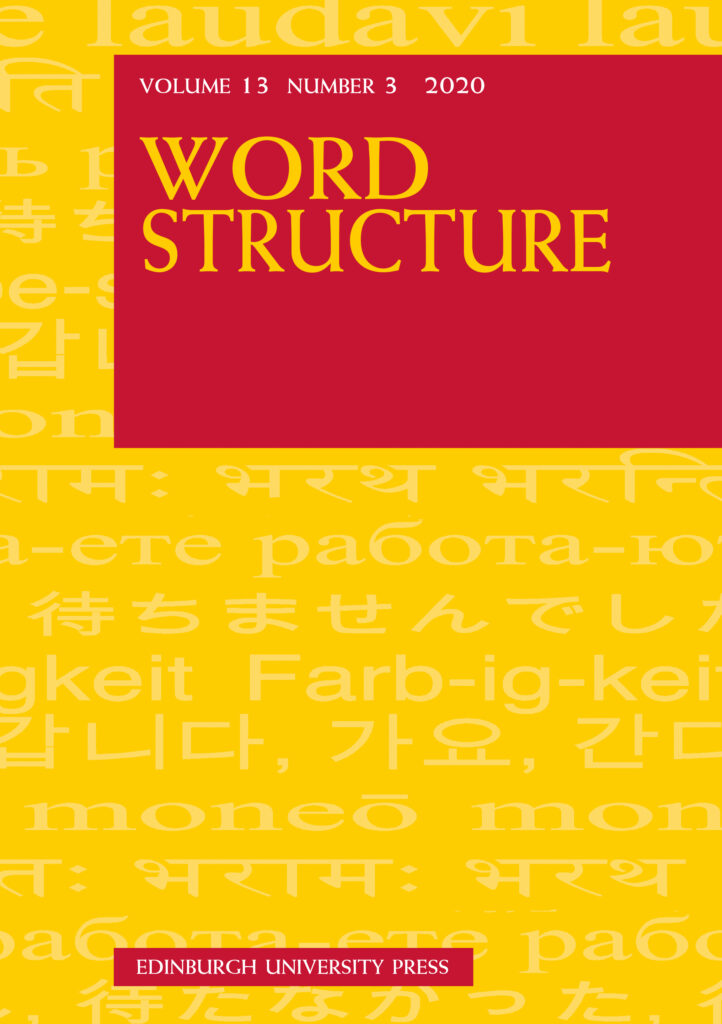
By Vesna Antoniova
Why do the intricacies of nominal compounds remain hidden even after being considered in a number of different frameworks? We have seen that even after half a century of research, no satisfactory conclusions to the understanding of interpretation or formation of compounds have been reached. Both theoretical and practical complexities which lie behind this process has been extensively researched from multiple points of view. Although it is not possible to list here all the proposals for compound semantics, a few which delve into the study in the most inspirational way will be mentioned.
It was probably after the works of Jespersen (1942) and Hatcher (1960), which meant a milestone in the study on compound semantics, when subsequent proposals started to emerge. The earliest were framed predominantly within the context of generative grammar, especially after Lees’ (1960) seminal study on nominalizations. Lees’ contribution is undeniable, however, the idea to account for the semantic links within compounds by syntactic paraphrases is hindered by problems, such as the non-recoverability of reliance on grammar when explaining compound semantics, and the arbitrariness of the underlying structures. Regardless, Lees’ influential ideas were reconsidered and reappeared in some later works, for instance in those of Aronoff (1976) or Levi (1987).
Levi (1987) framed her proposal within generative semantics and explicates the meaning of nominal compounds with an omitted predicate through a set of nine Recoverably Deletable Predicates RDPs). Nine RDPs which, according to Levi, can be recovered from N+N compounds, are CAUSE, HAVE, MAKE, USE, BE, IN, FOR, FROM, and ABOUT. Obviously, Levi’s RDPs system limited the ambiguity of the Deep Structure as it assumes only a twelve-way ambiguity for each N+N combination (nine RDPs, with three of them being bidirectional). Unfortunately, when the system was put to practice, it faced several problems, the most crucial one being its inability to be applied universally because some of the complex nominals admit more than one deletable predicate.
The semantic relationships have also been addressed from a psycholinguistic perspective which seems highly promising. Gagné & Shoben (1997) shed some more light on the comprehension of N+N compounds by examining the role of thematic relations that are established between compound constituents. Their contribution to the topic is known as Competition Among Relations in Nominals (CARIN) theory. The core idea of their theory is that conceptual compounding involves the selection of thematic relations showing how the modifiers and heads of compounds are related. They suggest that the interpretation of the meaning of nominal compounds rests on the information activated by the modifier, the so-called relational information, a factor which plays a crucial role in the understanding the meaning of complex nominals. The importance of psycholinguistic research shows unforeseen success in explicating the semantic relationships held between nominal compounds.
Another theory, a recent one, discusses nominal compound semantics from an onomasiological perspective (Štekauer 1998; 2005). It focuses on the combinability of semantic categories in a ternary structure of N+N and sheds more light on the understanding of these units. The objective of this perspective is to identify the onomasiological structure rules that enable one to identify both possible and impossible combinations of semantic categories in N+N compounds. This issue has not been studied yet even though that the identification of possible combinations of semantic categories in N+N compounds contributes to the understanding of their interpretation. Obviously, this kind of research requires a system of semantic categories applicable to all three constituents of the N+N structure (head, modifier, and their relation). In this respect, the approach differs from the above-mentioned traditional classifications of semantic relations such as Hatcher’s (1960) system of four logical relations, Levi’s system (1978) of a dozen RDPs, or Bourque’s (2014) 25‑way empirically-derived classification. Anyway, we agree with Arnaud and Pepper (2019) that their number depends on the requirements of the analysis and the degree of granularity.
Nevertheless, a system of semantic categories that aims to identify possible semantic structures of compound words in the process of their formation must be able to provide a generalized meaning of all three above-mentioned constituents by means of a system of semantic categories. For this purpose, the approach makes use of a system proposed within the framework of an onomasiological theory of word-formation (e.g., Dokulil 1962; Horecký 1983; Štekauer 1998) which takes the semantic level as a point of departure for the act of naming. The central role is played by semantic categories irrespective of their morphematic representation. In comparison to the binary structure principle of the generative word-formation, its emphasis is on a ternary onomasiological, that is, semantic structure, with the centre of gravity on the central ACTIONAL category. It is this factor that makes it possible to directly represent the semantic relation between the two polar semantic categories of the onomasiological structure whether or not the ACTION is morphematically represented. The objective of this approach thus is to reconstruct – from the surface form of a compound – the cognitively founded onomasiological (i.e., semantic) structure which predetermines and, at the same time, constrains the morphematic representation of a named object.
To my best knowledge, the preferred positions of semantic categories have not been examined yet. It appears to be a viable way of better understanding the semantics of (not only) N+N compounds from the perspective of their formation.
If the topic interests you, go and read my article on onomasiological approach to nominal compound semantics published in Word Structure, Vol. 13, no. 3.
References
Arnaud, Pierre J.L. & Pepper, Steve. 2019. The typology of associative relations in word-formation. (Paper presented at the 52nd Annual Meeting of the Societas Linguistica Europaea, Leipzig University, Germany, 21st – 24th August 2019).
Aronoff, Mark. 1976. Word formation in generative grammar. Cambridge: Cambridge University Press.
Bourque, Yves Stephen. 2014. Toward a typology of semantic transparency: The case of French compounds. University of Toronto. (Doctoral dissertation.)
Dokulil, Miloš. 1962. Tvoření slov v řeštine I. Teorie odvozování slov. Prague: Nakladatelství Československé akademie veˇd.
Gagné, Christina L. & Shoben, Edward J. 1997. Influence of thematic relations on the comprehension of modifier-noun combinations. Journal of Experimental Psychology: Learning, Memory, & Cognition 1. 71–87.
Hatcher, Anna G. 1960. An introduction to the analysis of English noun compounds. Word 16. 356–373.
Horecký, Ján. 1983. Vývin a teória jazyka. Bratislava: SPN
Jespersen, Otto. 1942. A Modern English grammar on historical principles. Part VI, morphology. London and Copenhagen: Munksgaard.
Lees, Robert B. 1960. The grammar of English nominalizations. Bloomington: Indiana University Press and Den Haag: Mouton.
Levi, Judith. 1978. The syntax and semantics of complex nominals. New York: Academic Press.
Štekauer, Pavol. 1998. An onomasiological theory of English word-formation. Amsterdam Philadelphia: John Benjamins.
Štekauer, Pavol. 2005. Meaning predictability in word-formation. Amsterdam-Philadelphia: John Benjamins.
Dr. Vesna Kalafus Antoniová is researcher at the Department of British and American Studies, Faculty of Arts, at Pavol Jozef Safarik University in Košice. She represents young researchers generation as she only finished her doctoral studies at the age of 27. Her research area of interest is word-formation, where she works primarily within the scope of onomasiology.
Word Structure is an international journal of linguistic morphology and all related disciplines. Topics covered in recent issues include functional discourse grammar, construction morphology, lexeme formation, word-formation in European languages, conversion and more.






